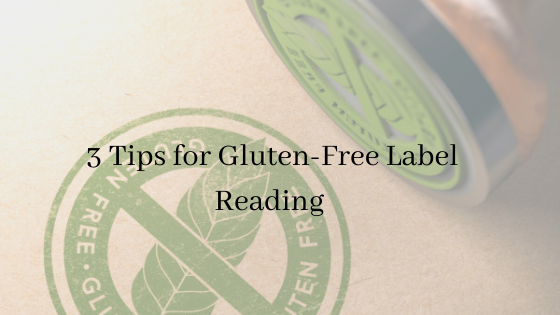Figuring out what’s on a food label is crucial for gluten-free consumers. Unlike other people, gluten-free consumers can develop serious allergies by consuming foods that are not certified gluten-free.
Here are three vital tips to help you know what foods are safe to consume when you or someone in your household is living gluten-free.
Keep an Eye Out for Third-Party Certification
A product is considered safe for gluten-free consumers if it has a third-party certification. The Gluten-Free Certification Organization (GFCO) mark is an excellent certification example.
Products with the GFCO marks typically go through a painstaking certification process that is twice as strict as that of the U.S. Food and Drug Administration (FDA).
The GFCO certification process includes:
- Ingredient analysis
- Off-the-shelf product testing
- Ensuring that tested foods contain no more than 10 ppm gluten (the FDA threshold for gluten content is 20 ppm)
- Plant audits
- Continuous food testing
Look for the Words “Gluten-Free”
Some products may not carry a third-party gluten-free certification mark but they are considered safe for gluten-free consumers if the products are regulated by the FDA and the labels have the words, “gluten-free.”
The words, “free of gluten,” “no gluten,” and “without gluten,” on FDA-regulated product labels also means the food should be gluten-free.
The FDA requires manufacturers to strictly meet the terms of the gluten-free definitions outlined in the relevant regulations.
However, an FDA-regulated product with a gluten-free label may also have wheat listed on the ingredient list. In such cases, look for a statement on the label that indicates that the wheat has been processed to meet the FDA requirements for gluten-free foods.
Also, some GFCO-certified products may contain wheat starch as an ingredient. In this case, the wheat has been processed to meet the 10 ppm (or less) gluten content standard of the GFCO.
Read the Ingredient List
The best way to ensure that you are buying and consuming a gluten-free product if the label doesn’t have a “gluten-free” or third-party certification is to read the ingredient list.
Packaged foods that are not gluten-free will contain one or more of the following ingredients:
- Wheat (faro, spelt, durum, emmer, and all other wheat types)
- Barley
- Brewer’s yeast
- Malt
- Rye
- Oats
Note that some oats products are safe for gluten-free consumers. However, the FDA does not allow descriptions in the ingredient list. That means you won’t find products with “gluten-free oats” as an ingredient on any packaged food label, at least not in the United States.
If you don’t see a gluten-free certification mark and can’t find the words “gluten-free” on the product label, it is best to avoid oat products since they may contain gluten.
The exception is buying oat products from other countries where descriptions are allowed on the ingredient list. In that case, you should look for “gluten-free oats” (or something to that effect) in the list of ingredients.
Want to learn more about healthy food choices? The Greater Goods has you covered. With over 15 years of experience in the health and functional foods industry, there’s so much more we can help you with. Book a free consultation today, let’s see how we can help.
